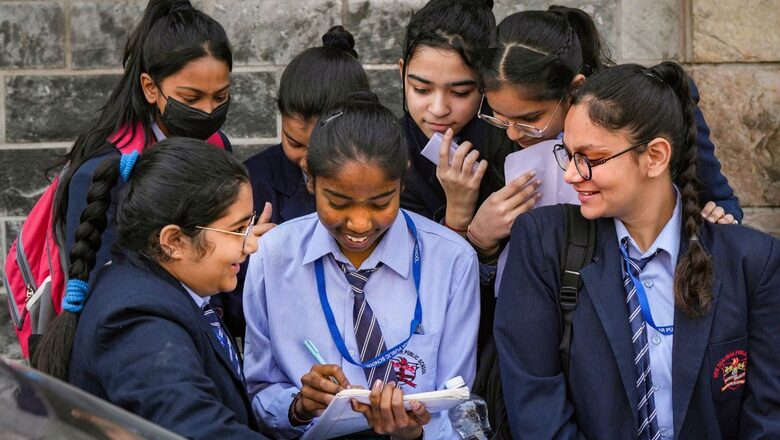
views
It is often said, “The pursuit of knowledge becomes all the more enriching when students can explore it through the lens of their own language.” Acknowledging the multi-linguistic landscape of our country, the Central Board of Secondary Education (CBSE) has issued a compelling directive, urging its affiliated schools to embrace the rich tapestry of Indian languages as the medium of instruction. In a country of one billion people which speaks more than 450 languages, this move rightly intends and addresses the growing needs of India and tries to bring inclusivity and wider access to not only education but also learning with understanding.
While the idea is uplifting, the practical implementation of this endeavour amidst the vast logistical intricacies could prove to be an arduous task. Moreover, the intent to have better learning outcomes for children is clear, there is a need to see if there’s a trade-off. We must ensure that the opportunity cost does not entail forfeiting the ambitious economic and development goals we are striving for.
Over the years, several education researchers and studies have shed light on the role of the mother tongue in education to enhance cognitive, linguistic, social, emotional and spoken language skills in children. In light of the same, CBSE’s push for Indian languages in schools can avoid knowledge gaps and increase the speed of learning and comprehension, especially in the foundational years. It has been proven time and again that multilingualism, especially for young learners, improves not only cultural awareness but also enhances cognitive abilities, including memory, problem-solving, and critical thinking skills and gives them a competitive edge.
The MultiLila project, a four-year research study, showed that the number of languages spoken at home, and whether they are also used in school, significantly influences a child’s school and cognitive abilities, highlighting the positive impact of incorporating children’s home language(s) in the classroom on their learning and social development.
The implementation of the recommended multilingual education approach will face a daunting challenge, particularly in places like Delhi, Bengaluru or Mumbai where schools host a diverse mix of children hailing from various states, having different mother tongues in a single classroom. Conversely, in regional schools where students predominantly share a common regional language, the implementation of this recommendation appears more promising and manageable. With homogenous groups in classrooms, the process of integrating the regional language as the optional/alternative medium of instruction could be carried out with relative ease. However, in a multilingual classroom, the pressing question arises — how do we discern which language is most suitable as another medium of instruction? While the easiest solution will be to have the most common or spoken language as the medium of instruction, steps need to be taken at both macro and micro levels to ensure that it doesn’t impose any language on anybody.
The CBSE has already acknowledged the challenge of organising quality textbooks and examinations in various languages while operating within the constraints of limited time. While the board has initiated measures in this direction, there is still a considerable amount of work to be accomplished considering the existing deadline. Another constraint that will arise is the need for skilled teachers who are proficient and at ease in conducting multilingual classes and delivering instruction in various languages.
In the same context, a significant challenge emerges as there is a widespread parental preference for only English medium schools, driven by the belief that English proficiency unlocks better opportunities and higher earning potential in India. It is essential to acknowledge that English, while not inherently superior to regional languages, has historically served as the link language of international trade and diplomacy. It helps second-language learners globalise their educational offers. Convincing Indian parents to seek English education for their children poses a crucial task in this scenario.
There is a difference between aspiring and implementing and we need to solve that. Navigating this intricate landscape requires careful consideration, extensive planning, and continuous dialogue with stakeholders, including teachers, parents, and students. The goal should be to strike a balance that recognises and respects the linguistic diversity of India while ensuring an inclusive and enriching educational experience for every child, preparing them for a more globalised world. Collaborative efforts and innovative teaching methodologies that embrace multilingualism as a broader educational value may offer viable solutions to address the challenges and bridge the gap between aspiration and implementation.
Given India’s vast linguistic diversity, growing metropolitanism, cosmopolitanism, migration, economic liberalisation and the global prevalence of English, teaching in regional languages needs to be planned so that it serves more than just a little purpose.
Mahek Nankani is Lead, Growth & Partnerships at The Educational Initiatives. Views expressed in the above piece are personal and solely that of the author. They do not necessarily reflect News18’s views.



















Comments
0 comment